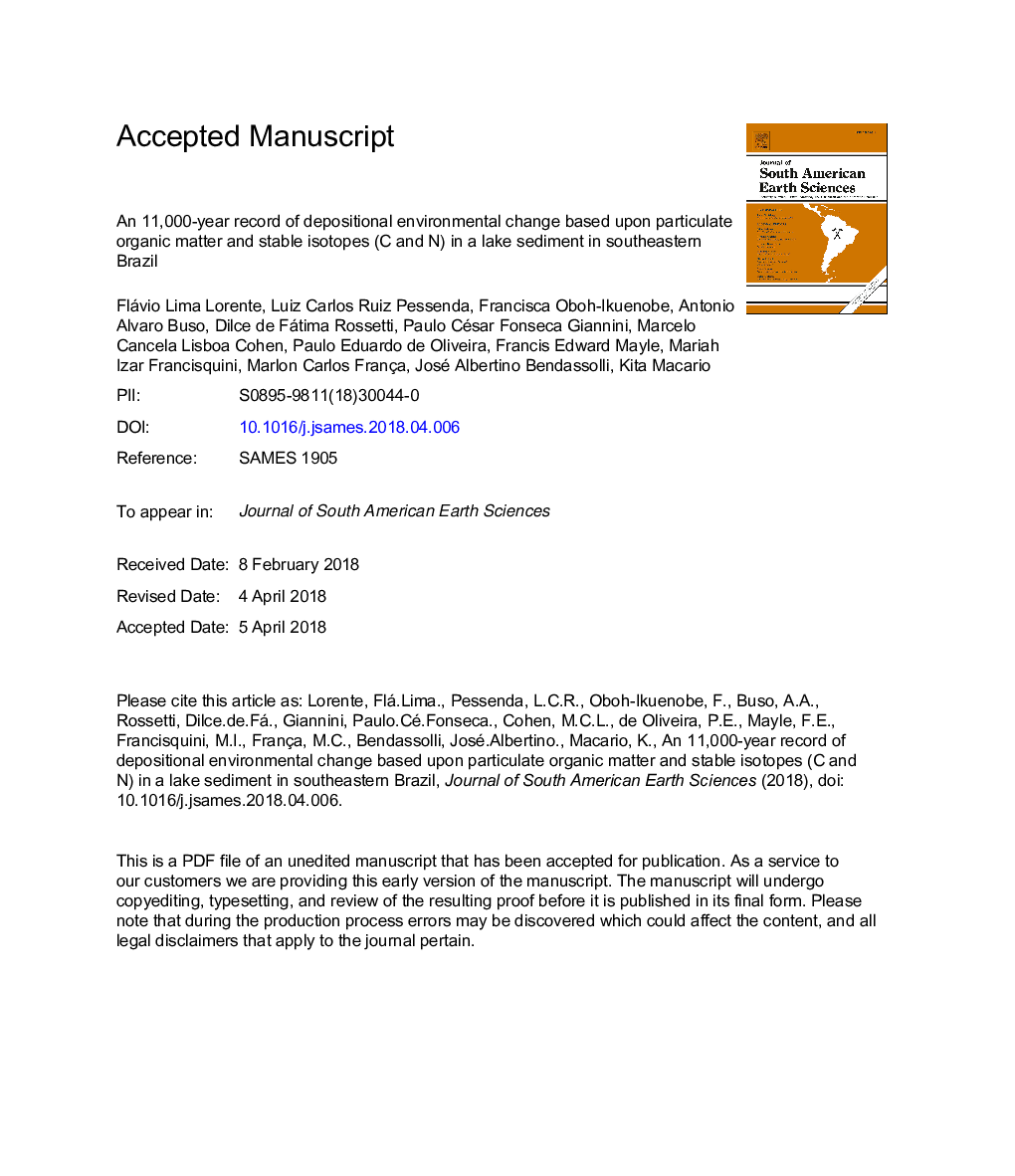| Article ID | Journal | Published Year | Pages | File Type |
|---|---|---|---|---|
| 8907683 | Journal of South American Earth Sciences | 2018 | 38 Pages |
Abstract
The aim of this paper is to reconstruct an 11,000-year history of depositional environmental change in southeastern Brazil, based upon the integration of particulate organic matter and stable isotope (C and N) data from a 136-cm sediment core from Lake Canto Grande. These proxies are used to explore the evolution of terrestrial and marine influence on the lake. Isotopic (δ13C: â27.87â° to â31.9â°; δ15N: â0.07â°-4.9â°) and elemental (total organic carbon - TOC: 0.58%-37.19%; total nitrogen - TN: 0.08%-1.73%; C/N: 0.3 to 54.7) values recorded in Lake Canto Grande suggest that the sedimentary organic matter was derived from mostly C3 land plants and freshwater phytoplankton. Particulate organic matter and cluster analyses distinguished four associations characterized by the predominance of amorphous organic matter, followed by phytoclasts and palynomorphs. These results indicate two different phases of lake evolution. The first phase (136 - 65â¯cm; â¼10,943â¯calâ¯yr. B.P. to â¼8529â¯calâ¯yr. B.P.) is recorded by sand layers interbedded with mud, which contain amorphous organic matter (AOM, 45-59%) and phytoclasts (opaques - OP: 6-18%; non-opaques - NOP: 17-23%) which indicate a floodplain area. The second phase (65-0â¯cm; â¼8529â¯calâ¯yr. B.P. to â¼662â¯calâ¯yr. B.P.) comprises mud, AOM (68-86%) and palynomorphs (PAL, 8-16%) related to lake establishment comparable to modern conditions. Thus, characterizing particulate organic matter, in combination with stable isotopes, proved to be invaluable proxies for lacustrine paleoenvironmental change through the Holocene.
Related Topics
Physical Sciences and Engineering
Earth and Planetary Sciences
Earth and Planetary Sciences (General)
Authors
Flávio Lima Lorente, Luiz Carlos Ruiz Pessenda, Francisca Oboh-Ikuenobe, Antonio Alvaro Buso Junior, Dilce de Fátima Rossetti, Paulo César Fonseca Giannini, Marcelo Cancela Lisboa Cohen, Paulo Eduardo de Oliveira, Francis Edward Mayle,
